We explain what the mandala is, its characteristics, types and therapeutic benefits. Also, mandalas to color.
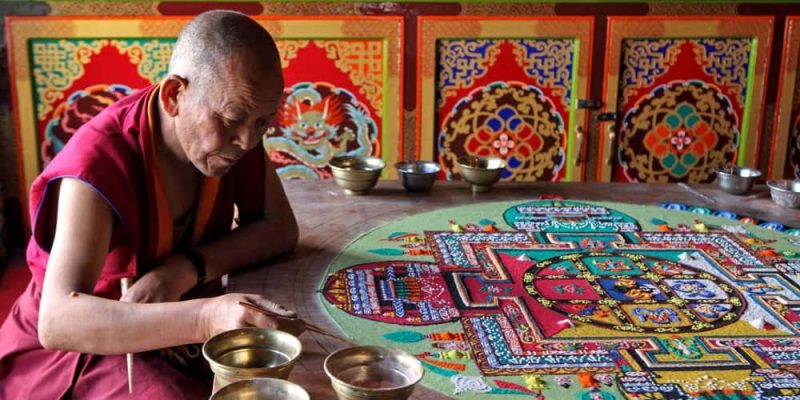
What is mandala?
Mandalas or mandalas are symbolic diagrams common in various spiritual traditions, especially Hinduism and Buddhism. represent the macrocosm and the microcosm through a set of concentric circles and recurring patterns. Hence its name, which in Sanskrit means “circle.”
Although there are many variants, a mandala is usually a representation of the universe as an organized and harmonious whole (macrocosm), whose forces are reflected in the human mind (microcosm). It usually consists of a central point, a middle space of patterns with shapes, lines and silhouettes, and a circle around the entire composition. Each figure has a specific meaning that is related to an element, a chakra or a god.
These types of representations are used in sacred rites or meditation practices. They can be drawn on paper, painted on murals or made on the ground, through the use of colored powders, dyes, sand and other materials of natural origin such as minerals, plants or different types of soil. Three-dimensional mandalas are also built on the occasion of special festivities.
The mandalas involve the idea of the sacred, perfection, symmetry, balance and the eternal return of nature. This is what the ancient Greeks represented with the ouroboros, the snake that bites its own tail. Likewise, in other traditions, such as medieval Christianity or the Chacanas of the pre-Hispanic Andean world, there are forms and symbols very similar to the mandala in which the Hindu and Buddhist religions saw their beliefs represented.
This probable universality of mandalas was what led the Swiss psychoanalyst Carl Gustav Jung to consider them as expressions of the collective unconscious and the construction processes of the individual psyche.
- See also: Mantra
Types of mandalas
There are many popular classifications of mandalas, for example, according to their supposed origins (Buddhist, Aztec, Hindu, among others) or according to their shapes and colors. However, they are all contemporary arrangements, the result of the popularization of these drawings in the West.
In the original tradition of the East (China, Japan and Tibet, especially), there are two forms of mandala. Each one represents different elements of the universe, which complement and recognize each other. The two types of mandalas are:
- Garbha-dhatu. In Spanish, “world of the womb”. It represents the source of all creation and manifestation of the universe. It is usually drawn as a circle from which lotus flowers emanate in a centrifugal movement. Its movement starts from the one and goes towards the multiple. In its center is the Great Solar Buddha.
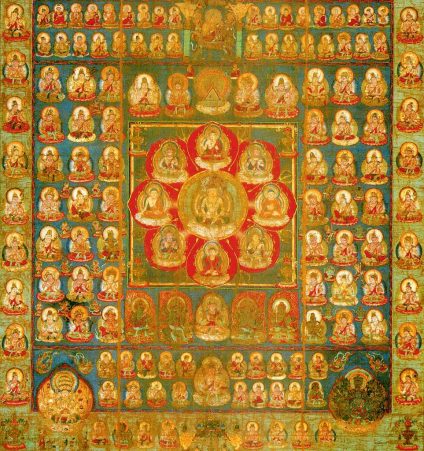

- Vajra-dhatu. In Spanish, “diamond world” or “lightning world.” It refers to the liberation from suffering, the path to enlightenment and the encounter with the true nature of the Buddha. It is represented with a central Buddha surrounded by bodhisattvas (sentient beings who achieve enlightenment), and symbolizes the encounter between compassion and wisdom. Its movement goes from the multiple to the one.
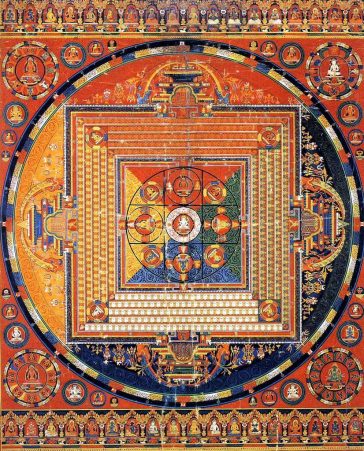

Therapeutic benefits of mandala
In the West, especially in recent decades, psychology and various types of alternative therapies have used mandalas as a tool for expression, introspection, concentration, relaxation and even the exploration of the unconscious.
The combination of aesthetic, symbolic and psychological effects involved in creating mandalas has proven to be effective in certain cases in reducing stress and anguish. Mandalas, on the other hand, encourage attention, develop awareness of the present moment and facilitate the recording of emotions, thoughts and feelings.
Other benefits are also attributed to it, such as stimulating creativity and imagination, increasing problem-solving skills, improving performance in decision-making, and contributing to a greater state of general well-being.
Thanks to the growing popularity of the therapeutic benefits of mandalas, a large publishing market dedicated to books with designs of these diagrams for coloring has been generated. The drawings, with pre-designed contours, have no age limitations and do not require skills, study or use of special techniques, allowing anyone to take advantage of them.
Mandalas to color

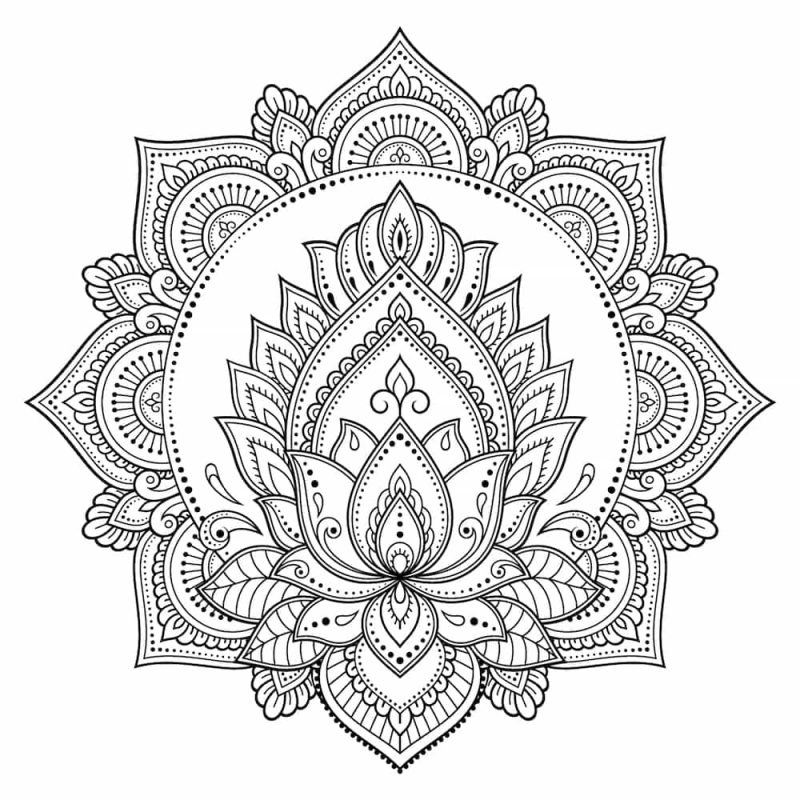
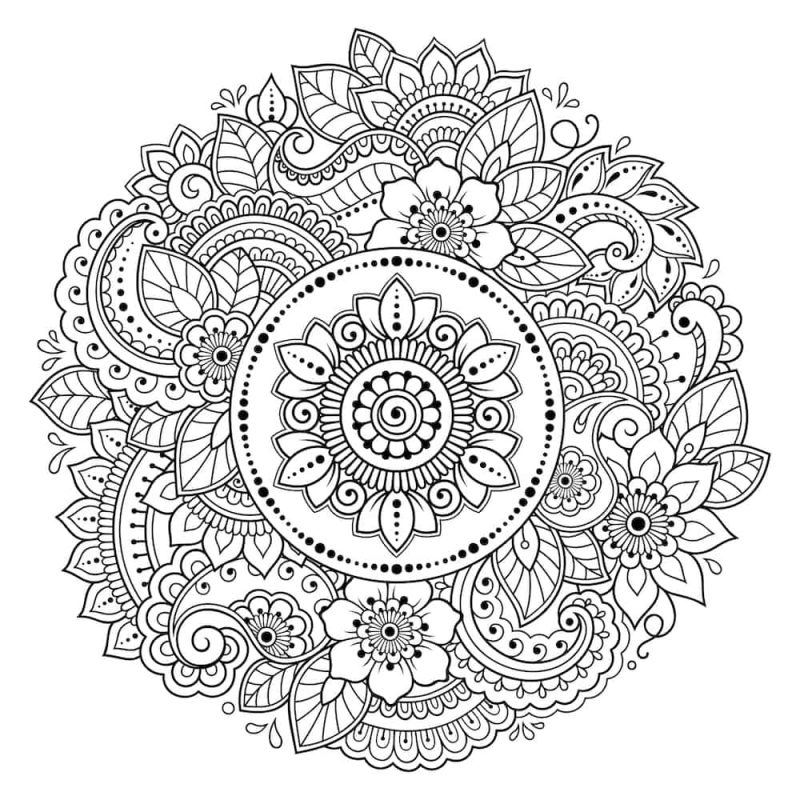
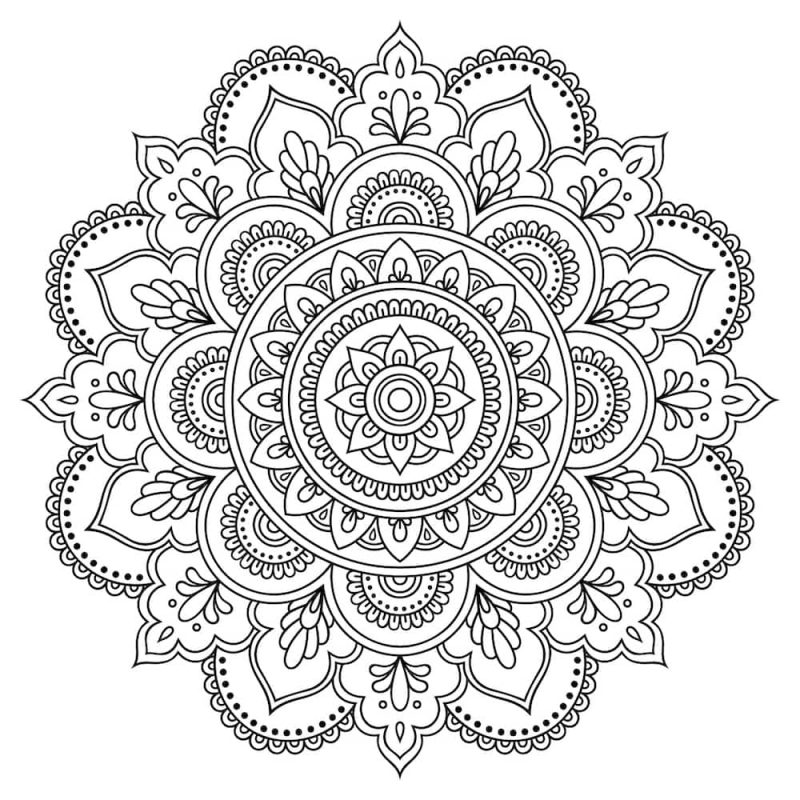
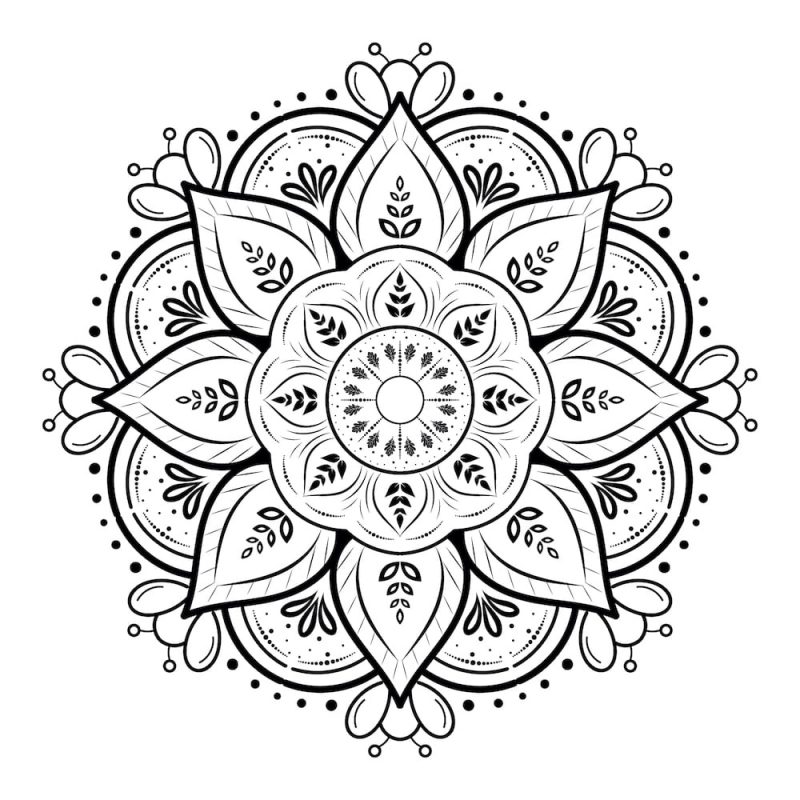
References
- Grotenhuis, E. (1999). Japanese Mandalas. Representations of Sacred Geography. University of Hawai'i Press.
- Jung, C. G. (2002). Archetypes and the collective unconscious. About the symbolism of the mandala. Trotta.
- The Metropolitan Museum of Art. (2021). Mandala of Jnanadakini. https://www.metmuseum.org/





